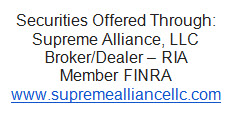A 403(b) plan, also known as a tax-sheltered annuity (TSA) plan, is a retirement plan for certain employees of public schools, employees of certain tax-exempt organizations, and certain ministers. Individual accounts in a 403(b) plan can be any of the following types.
There are three benefits to contributing to a 403(b) plan.
-
The first benefit is that you don’t pay income tax on allowable contributions until you begin making withdrawals from the plan, usually after you retire. Allowable contributions to a 403(b) plan are either excluded or deducted from your income. However, if your contributions are made to a Roth contribution program, this benefit doesn’t apply. Instead, you pay income tax on the contributions to the plan but distributions from the plan (if certain requirements are met) are tax free.
Note. Generally, employees must pay social security and Medicare tax on their contributions to a 403(b) plan, including those made under a salary reduction agreement. See chapter 4, Limit on Elective Deferrals , for more information.
- The second benefit is that earnings and gains on amounts in your 403(b) account aren’t taxed until you withdraw them. Earnings and gains on amounts in a Roth contribution program aren’t taxed if your withdrawals are qualified distributions. Otherwise, they are taxed when you withdraw them.
- The third benefit is that you may be eligible to take a credit for elective deferrals contributed to your 403(b) account. See chapter 10, Retirement Savings Contributions Credit (Saver's Credit) , for more information.
Excluded.
If an amount is excluded from your income, it isn’t included in your total wages on your Form W-2. This means that you don’t report the excluded amount on your tax return.
Deducted.
If an amount is deducted from your income, it is included with your other wages on your Form W-2. You report this amount on your tax return, but you are allowed to subtract it when figuring the amount of income on which you must pay tax.
Who Can Participate in a 403(b) Plan?
Any eligible employee can participate in a 403(b) plan.
Eligible employees.
The following employees are eligible to participate in a 403(b) plan.
-
Employees of tax-exempt organizations established under section 501(c)(3). These organizations are usually referred to as section 501(c)(3) organizations or simply 501(c)(3) organizations.
-
Employees of public school systems who are involved in the day-to-day operations of a school.
-
Employees of cooperative hospital service organizations.
-
Civilian faculty and staff of the Uniformed Services University of the Health Sciences.
-
Employees of public school systems organized by Indian tribal governments.
-
Certain ministers (explained next).
Ministers.
The following ministers are eligible employees for whom a 403(b) account can be established.
-
Ministers employed by section 501(c)(3) organizations.
-
Self-employed ministers. A self-employed minister is treated as employed by a tax-exempt organization that is a qualified employer.
-
Ministers (chaplains) who meet both of the following requirements.
-
They are employed by organizations that aren’t section 501(c)(3) organizations.
-
They function as ministers in their day-to-day professional responsibilities with their employers.
-
Throughout this publication, the term chaplain will be used to mean ministers described in the third category in the list above.
Example.
A minister employed as a chaplain by a state-run prison and a chaplain in the United States Armed Forces are eligible employees because their employers aren’t section 501(c)(3) organizations and they are employed as ministers.
Universal availability.
Generally, all eligible employees (with certain exceptions) of an employer must be permitted to make elective deferrals (including Roth elective deferrals) if any employee of the employer may make elective deferrals. If your employer offers a 403(b) plan, you should have received information about your eligibility to participate.
Who Can Set Up a 403(b) Account?
You can’t set up your own 403(b) account. Only employers can set up 403(b) accounts. A self-employed minister can’t set up a 403(b) account for his or her benefit. If you are a self-employed minister, only the organization (denomination) with which you are associated can set up an account for your benefit.
How Can Contributions Be Made to My 403(b) Account?
Generally, only your employer can make contributions to your 403(b) account. However, some plans will allow you to make after-tax contributions (defined below).
The following types of contributions can be made to 403(b) accounts.
-
Elective deferrals . These are contributions made under a salary reduction agreement. This agreement allows your employer to withhold money from your paycheck to be contributed directly into a 403(b) account for your benefit. Except for Roth contributions, you don’t pay income tax on these contributions until you withdraw them from the account. If your contributions are Roth contributions, you pay taxes on your contributions but any qualified distributions from your Roth account are tax free.
-
Nonelective contributions . These are employer contributions that aren’t made under a salary reduction agreement. Nonelective contributions include matching contributions, discretionary contributions, and mandatory contributions made by your employer. You don’t pay income tax on these contributions until you withdraw them from the account.
-
After-tax contributions . These are contributions (that aren’t Roth contributions) you make with funds that you must include in income on your tax return. A salary payment on which income tax has been withheld is a source of these contributions. If your plan allows you to make after-tax contributions, they aren’t excluded from income and you can’t deduct them on your tax return.
-
A combination of any of the three contribution types listed above.
Do I Report Contributions on My Tax Return?
Generally, you don’t report contributions to your 403(b) account (except Roth contributions) on your tax return. Your employer will report contributions on your 2017 Form W-2. Elective deferrals will be shown in box 12 with code E for pre-tax amounts and code BB for Roth amounts, and the Retirement plan box will be checked in box 13. If you are a self-employed minister or chaplain, see the discussions next.
Self-employed ministers.
If you are a self-employed minister, you must report the total contributions as a deduction on your tax return. Deduct your contributions on line 28 of the 2017 Form 1040.
Chaplains.
If you are a chaplain and your employer doesn’t exclude contributions made to your 403(b) account from your earned income, you may be able to take a deduction for those contributions on your tax return.
However, if your employer has agreed to exclude the contributions from your earned income, you won’t be allowed a deduction on your tax return.
If you can take a deduction, include your contributions on line 36 of the 2017 Form 1040. Enter the amount of your deduction and write "403(b)" on the dotted line next to line 36.
How Much Can Be Contributed to My 403(b) Account?
There are limits on the amount of contributions that can be made to your 403(b) account each year. If contributions made to your 403(b) account are more than these contribution limits, penalties may apply.
Chapters 2 through 6 provide information on how to determine the amount that can be contributed to your 403(b) account.
Worksheets are provided in chapter 9 to help you determine the maximum amount that can be contributed to your 403(b) account each year. Chapter 7, Excess Contributions , describes how to prevent excess contributions and how to get an excess contribution corrected.
Throughout this publication, the limit on the amount that can be contributed to your 403(b) account for any year is referred to as your maximum amount contributable (MAC). This chapter:
-
Introduces the components of your MAC,
-
Tells you how to figure your MAC, and
-
Tells you when to figure your MAC.
Excluded.
If an amount is excluded from your income, it isn’t included in your total wages on your Form W-2. This means that you don’t report the excluded amount on your tax return.
Deducted.
If an amount is deducted from your income, it is included with your other wages on your Form W-2. You report this amount on your tax return, but you are allowed to subtract it when figuring the amount of income on which you must pay tax.
This information is not intended to be tax or legal advice, and it may not be relied
on for the purpose of avoiding any federal tax penalties. You are encouraged to seek
tax or legal advice from an independent professional advisor.


